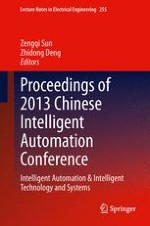Proceedings of the 2013 Chinese Intelligent Automation Conference presents selected research papers from the CIAC’13, held in Yangzhou, China. The topics include e.g. adaptive control, fuzzy control, neural network based control, knowledge based control, hybrid intelligent control, learning control, evolutionary mechanism based control, multi-sensor integration, failure diagnosis, and reconfigurable control. Engineers and researchers from academia, industry, and government can gain an inside view of new solutions combining ideas from multiple disciplines in the field of intelligent automation.
Zengqi Sun and Zhidong Deng are professors at the Department of Computer Science, Tsinghua University, China.
